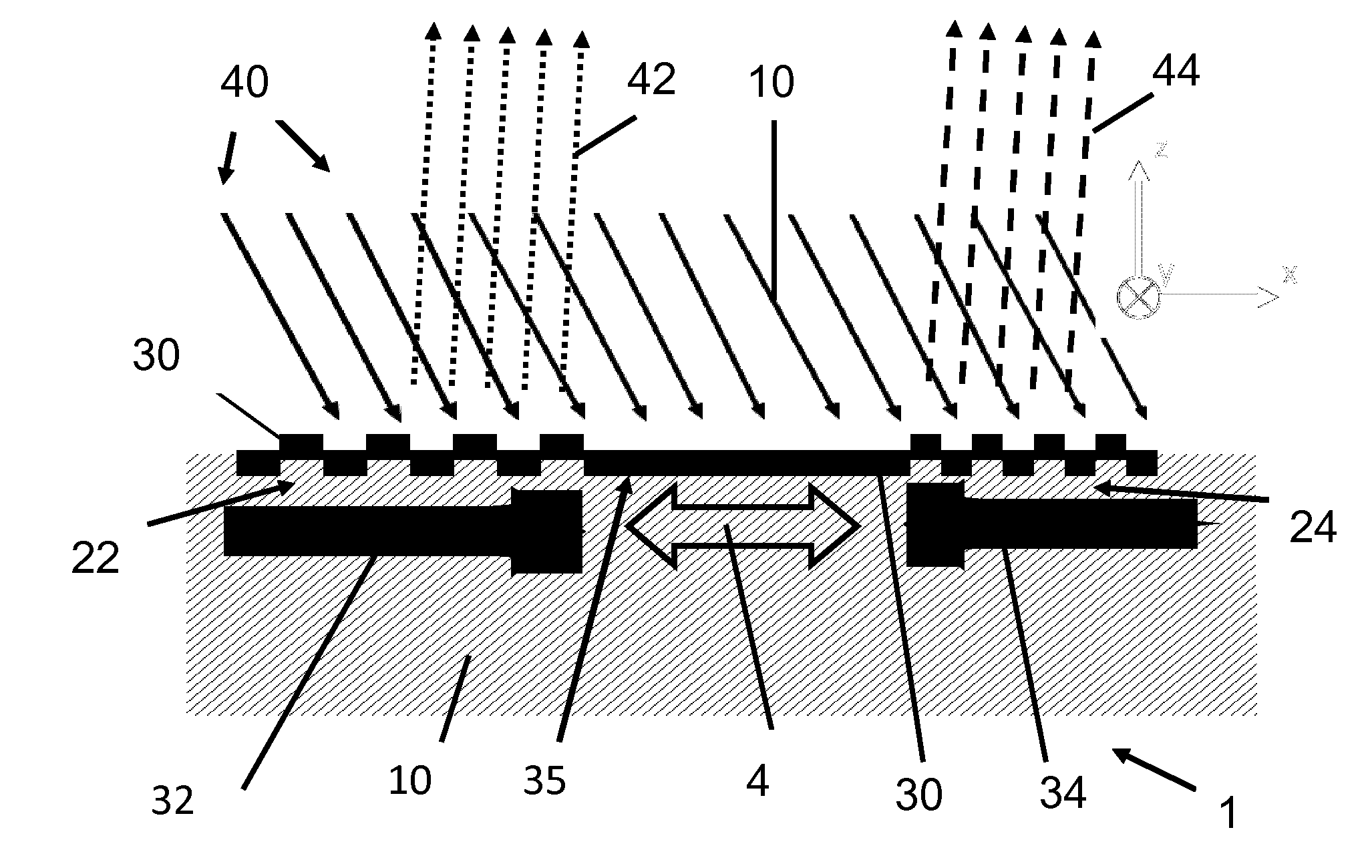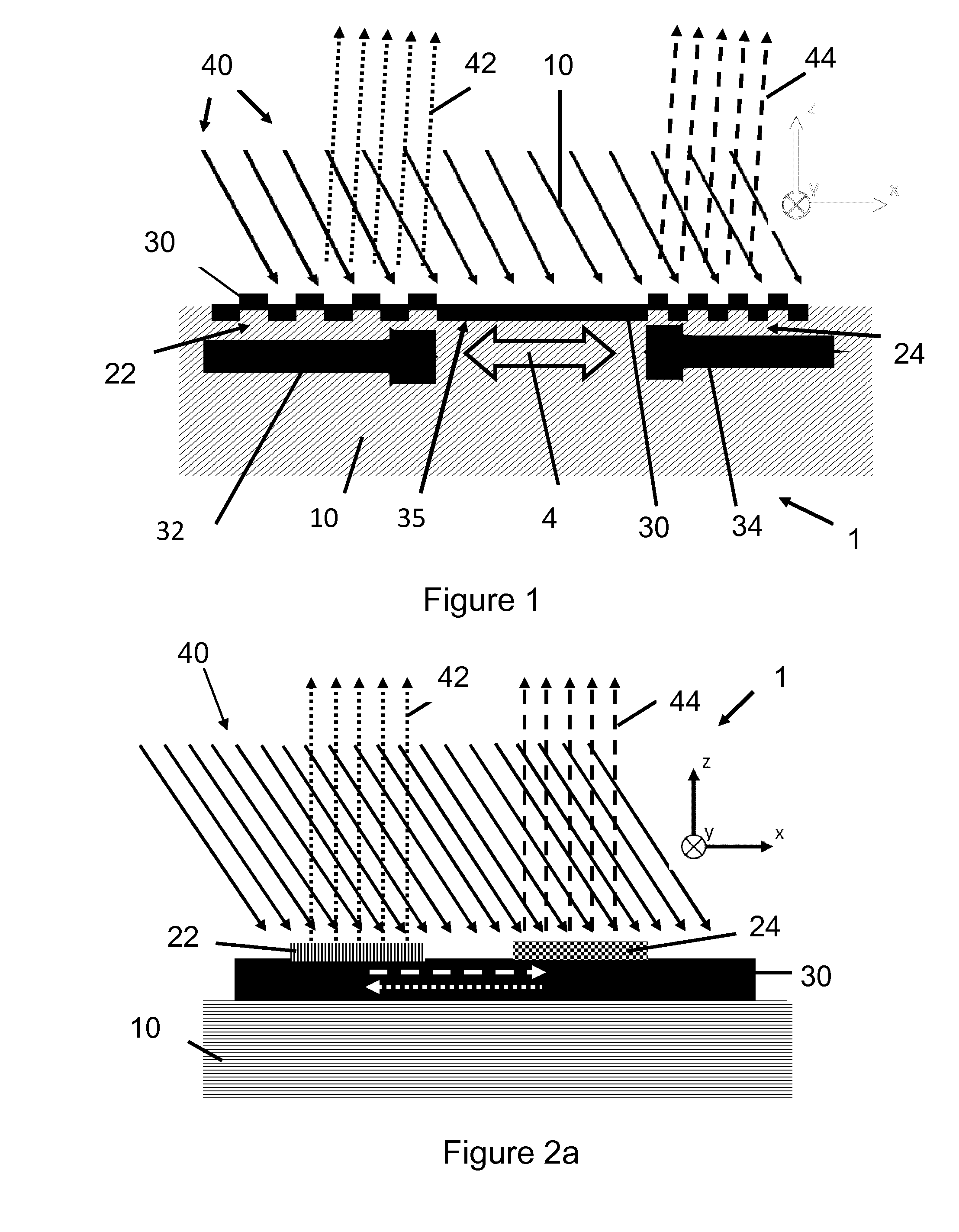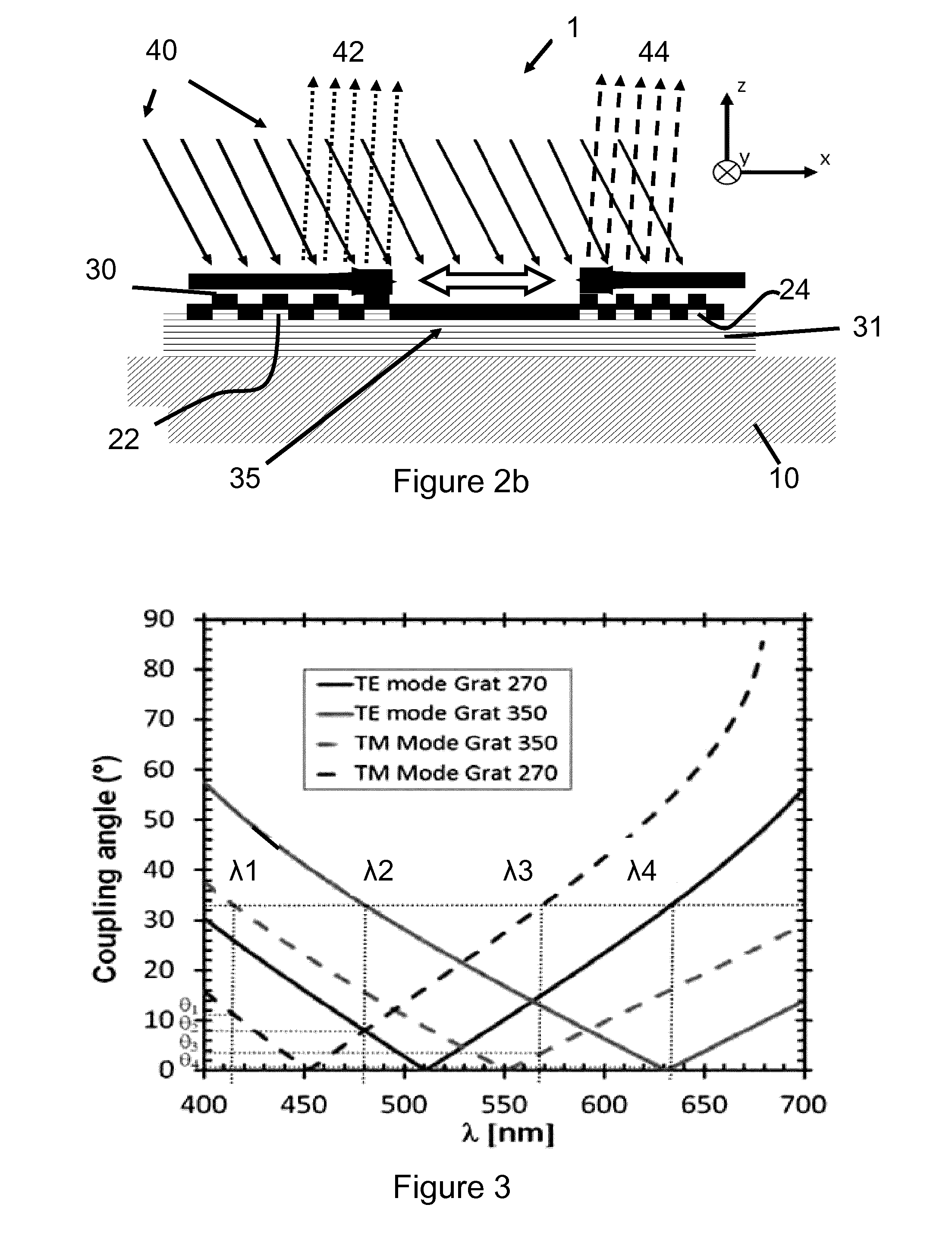Guided mode resonance device
a resonance device and guided mode technology, applied in the field of optical devices, can solve the problems of large number of layers, high complexity of the technology to master the optical quality of such devices, and high cost, and achieve the effect of simple, cheap and quick way
- Summary
- Abstract
- Description
- Claims
- Application Information
AI Technical Summary
Benefits of technology
Problems solved by technology
Method used
Image
Examples
Embodiment Construction
[0072]Resonating waveguide gratings (RWG), also called leaky mode filters or also guided-mode resonance filters or guided-mode resonance devices are well described in the literature. The functional principle of these devices is based on a resonance phenomenon that may occur in waveguide grating structures. Resonant waveguide gratings consist of a combination of a subwavelength grating and a thin film waveguide. The subwavelength grating acts as an incoupling grating for the waveguide. A resonance occurs when a portion of the incident light, diffracted by the grating, matches a mode of the waveguide. As most of the spectrum of the incident light on the grating does not couple into the waveguide, strong spectral changes may be observed in reflection and / or transmission. The resonance effects, their theoretical explanation and their applications have been extensively described in the past and will not be further commented here. Relevant information on this subject may be found in the f...
PUM
| Property | Measurement | Unit |
|---|---|---|
| refractive index | aaaaa | aaaaa |
| incident angle | aaaaa | aaaaa |
| thickness | aaaaa | aaaaa |
Abstract
Description
Claims
Application Information
 Login to View More
Login to View More - R&D
- Intellectual Property
- Life Sciences
- Materials
- Tech Scout
- Unparalleled Data Quality
- Higher Quality Content
- 60% Fewer Hallucinations
Browse by: Latest US Patents, China's latest patents, Technical Efficacy Thesaurus, Application Domain, Technology Topic, Popular Technical Reports.
© 2025 PatSnap. All rights reserved.Legal|Privacy policy|Modern Slavery Act Transparency Statement|Sitemap|About US| Contact US: help@patsnap.com



